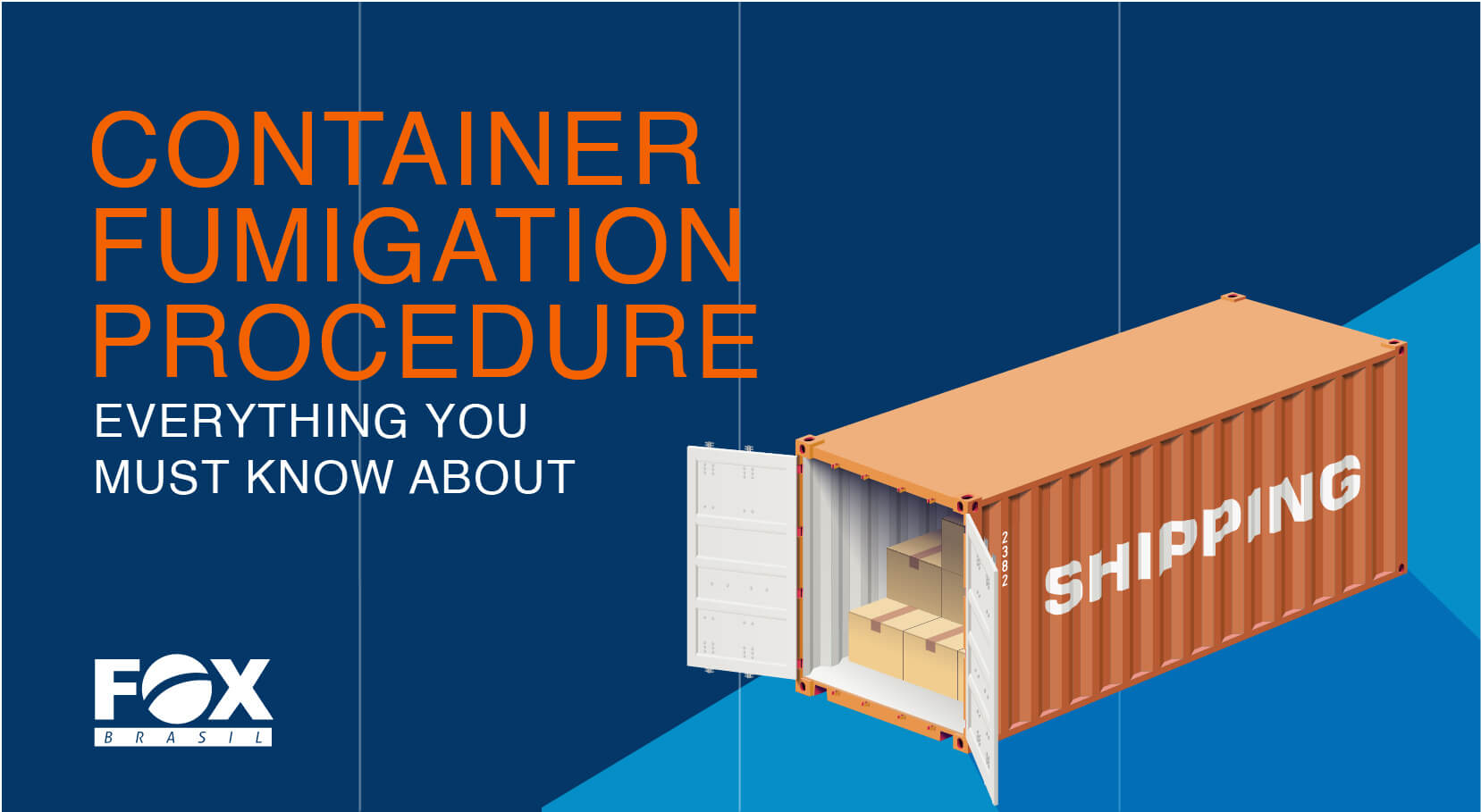Container fumigation procedure: Everything you must know about it!

Understand Logistics & Freight
Fumigation is a type of pest control by which the disinfection procedure takes place in a dry way. This method, also known as a phytosanitary treatment, is widely used nowadays and increasingly common in different market segments (especially when it comes to transporting goods through containers). Apart from its pest control purpose, the container fumigation procedure is also required by national and international laws that regulate the transit of goods.
Therefore, this procedure is an essential step for freight forwarders to consider before the shipment of any kind of goods, with emphasis on grains, vegetables, and wood materials/pallets. After all, container fumigation is the most effective way to ensure that the cargo and its packaging won’t contain any quarantine pest that may endanger the country of destination.
Understanding the container fumigation procedure
Why is fumigation so important?
The container fumigation procedure aims to prevent the entry of exotic quarantine pests into the cargo’s country of destination. In this procedure, special products are used to eradicate or control the international spread of pests that already exist in the cargo’s origin, as well as those originating from other countries.
What are quarantine pests?
Quarantine pests are any form of pest or parasite that, in natural conditions, carry with them the power to cause damage to the flora and fauna of a certain locality. When exposed to a new environment, these pests can be a major threat to international health.
There are several types of quarantine pests, but no species is as trivial as the Asian Lady Beetle. This beetle is commonly found in containers and wooden materials used for the accommodation of the loads. For this reason, it sets at the top of the list of the most fought quarantine pests worldwide.
How does the container fumigation procedure work?
Container fumigation controls any type of pest through an efficient, safe and dry disinfection process, which is usually done by gas. The most commonly used gases in the fumigation process are methyl bromide and phosphine. Although both maintain the same level of effectiveness, methyl bromide is more frequently used in containers.
In order to receive the fumigant, the container must have its structures in good condition. The fumigation site must be isolated within a radius of 5 meters, and a sticker containing basic information such as date and time of start and end of treatment should be attached to the container’s door, as well as the information of the treating company and the technician responsible for the operation.
The gas is injected through a probe inserted inside the container with the doors already closed. Employees must be properly protected by using personal protective equipment and it is also recommended that the fumigation site accommodates collective protective equipment. After the indicated exposure time, aeration should be carried out for the merchandise release.
What are the fumigation requirements?
Do I need a fumigation certificate?
As you saw in the begging of this post, without treatment, every type of good and its wooden packaging can be denied entry into the destination country. To verify that, the port authority asks for written permits, certificates or other proof of treatment.
Because of that, every fumigated container, when the procedure is done in the right way and with a proper company, comes with a certificate. The fumigation is a legal requirement by the buyer, so the fumigation certificate is normally issued by the fumigator or by obtaining approval for fumigation from the licensing authority.
The certificate is sometimes referred to as a pest-control certificate, and it is a document that confirms that any wooden packaging materials used in a cargo shipment have been correctly fumigated. This document contains details such as the treatment purpose, the fumigants used, and the temperature range.
Are there any required stamps in the wooden package?
The most important stamp that has to be used in wooden package is the ISPM15 – International Standards for Phytosanitary Measures Nº 15. It is a set of guidelines that regulates all wood packaging material in the international community and during global trades. He shows that the package follows several global standards for phytosanitary measures, which reduces the risk of the introduction and spread of pests during international trade.
The ISPM15 stamp is adopted by the International Plant Protection Convention (IPPC), which is a part of the United Nation’s Food and Agriculture Organization. He affects both softwoods and hardwoods, such as dunnage, pallets, crates, reels, drums, and load boards, and is required on each individual piece of wood in the packaging that is being exported.
We hope this content was useful to you!
If you wish to read more articles on topics regarding international trade, freight forwarding, and logistics, make sure to access FOX Brasil’s Blog. We are constantly updating it with exclusive and interesting content!
